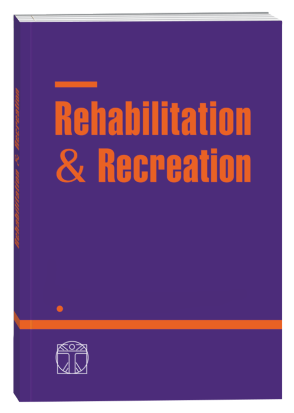CHILDREN WITH TYPE 1 DIABETES AND PHYSICAL EDUCATION LESSONS IN EDUCATIONAL INSTITUTIONS
DOI:
https://doi.org/10.32782/2522-1795.2023.15.28Keywords:
diabetes type 1 in children, physical activity, physical exercises.Abstract
About 20,000 children suffer from type 1 diabetes in Poland. The highest incidence falls during the period of school and pre-school age. Knowledge about the disease among the adult population is very low. Lack of information and knowledge about how to deal with a sick child often leads to fear and reluctance to care. According to the recommendation of the PTD (Polish Diabetes Association), diabetes is not an indication for an individual course of education and exemption from any classes, e.g. physical education or trips. In order to prevent the stigmatization of a sick child, and above all to ensure his safety at school, employees of each educational institution attended by a sick student should undergo appropriate, mandatory training. In Poland, in the years 2014-2020, the Ministry of Health organized trainings covering information on diabetes along with the principles of first aid for a sick child. The courses were aimed at all employees of primary schools and kindergartens. A total of 11,634 employees from 8,073 facilities took part in them – including kindergartens and primary schools. In 2020, there were 13,2 thousand in Poland public kindergartens and 14,2 thous. public primary schools, which gives a total of 27,4 thousand outlets. Therefore, only employees of 1/3 of educational institutions attended the course. Physical activity is considered an inseparable and integral element of diabetes treatment. Children with well-controlled diabetes can perform very intense physical activity, not only recreationally but also at a professional level. Both in the world and in Poland, many outstanding athletes struggle with type 1 diabetes. The disease does not prevent them from winning medals, even at the Olympic level. Diabetes should not be seen as a limitation in participating in school sports. A prerequisite for a sports activity is knowledge of the rules of diabetes management and self-control related to the disease. The ability to balance exercise with insulin intake and a proper diet is essential. Due to the constant increase in the incidence of type 1 diabetes among Polish children, changes are needed in the didactic program run by universities where future physical education teachers are educated.
References
Bohn B., Herbst A., Pfeifer M. i in. (2015). Wpływ aktywności fizycznej na kontrolę glikemii i występowanie czynników ryzyka sercowo-naczyniowego u dorosłych z cukrzycą typu 1: przekrojowe wieloośrodkowe badanie z udziałem 18 028 pacjentów. Opieka nad cukrzycą. 78-79. 2. Cuenca-García M., Jago R., Shield J.P., Burren C.P. (2012). Jak aktywność fizyczna i sprawność fizyczna wpływają na kontrolę glikemii u młodych osób z cukrzycą typu 1? Cukrzyca Med. 97.
Grygus I., Nesterchuk N., Skalski D., Zabolotna O. (2021). Edukacja w polskim społeczeństwie nowoczesnym a edukacja zdrowotna. Kultura fizyczna, edukacja zdrowotna i bezpieczeństwo. Gdańsk, 81-97.
Kashuba V., Andrieieva O., Yarmak O., Grygus O., Napierala M., Smolenska O., Ostrowska M., Hagner-Derengowska M., Muszkieta R., Zukow W. (2021). Morpho-functional screening of primary school students during the course of physical education. Journal of Physical Education and Sport. 21(2):748-756.
Konturek S. (2019). Fizjologia człowieka. Podręcznik dla studentów medycyny. Edra Urban& Partner. 57.
Martyn-Nemeth P., Schwarz Farabi S., Mihailescu D. et al. (2016). Lęk przed hipoglikemią u dorosłych z cukrzycą typu 1: wpływ postępów terapeutycznych i strategii zapobiegania – przegląd. J Powikłania cukrzycy. 73.
Momot O., Diachenko-Bohun M., Hrytsai N., Grygus I., Stankiewicz B., Skaliy A., Hagner-Derengowska M., Napierala M., Muszkieta R., Ostrowska M., Zukow W. (2020). Creation of a Healthcare Environment at a Higher Educational Institution. Journal of Physical Education and Sport, Vol 20 (Supplement issue 2), 975–981.
Mutlu E.K., Mutlu C., Taskiran H., Ozgen I.T. (2015). Związek poziomu aktywności fizycznej z depresją, lękiem i jakością życia u dzieci z cukrzycą typu 1. J Pediatr Endocrinol Metab. 56.
Skalski D., Kowalski D., Grygus I., Nesterchuk N. (2020). Physical culture in a rural environment and health education. Rehabilitation & recreation. 6. 76-88. http://doi.org/10.5281/ zenodo.4033295
Skalski D., Kowalski D., Grygus I., Zabolotna O. (2021). Rola rodziny i państwa w wyrównywaniu szans życiowych dzieci pochodzących z różnych środowisk społecznych a edukacja zdrowotna. Zarzadzanie kultura fizyczna zdrowiem i bezpieczeństwem. Starogard Gdański.
Skalski D.W., Grygus I., Skalska E., Rybak L. (2022). Współczesna kultura fizyczna a styl życia. Spektrum peregrynacji po kulturze fizycznej dla mistrzów wychowania fizycznego: Scientific monograph. Praca zbiorowa pod redakcją Białasa M. i Skalskiego D.W. Gdańsk. 21-34.
World Health Organization: Physical activity strategy for the WHO European Region 2016-2025. World Health Organization, 2016.
Downloads
Published
How to Cite
Issue
Section
License

This work is licensed under a Creative Commons Attribution-NonCommercial-NoDerivatives 4.0 International License.











